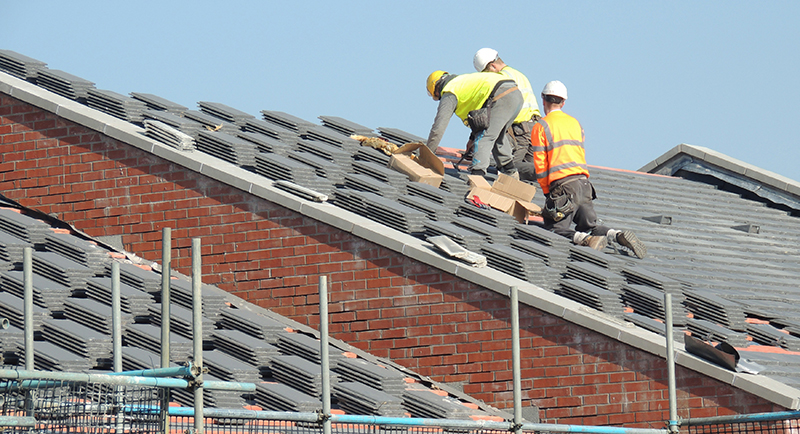
In the push to design products that are quicker and easier to install, is there a danger of taking the skill out of roofing? Mark Parsons, technical director at Russell Roof Tiles, tells Project Scotland of the importance of balancing efficiency with craftsmanship.
With ambitious housing targets putting pressure on contractors and housebuilders, it is no surprise that the popularity of quick and easy-to-install pitched roofing products has made its mark on the roofing industry over the last five years.
Dry Fix products in particular have increased in popularity, despite having already been on the market for more than 25 years. Dry Fix is renowned for providing a more reliable and effective roofing fixing solution than mortar bedding. The product can be easily mechanically fixed with the tiles to provide a neat robust roofing finish.
Yet despite these products being easier to install, contractors and roofers need to have a great understanding and thorough knowledge of the products they are using.
Every region and roof can be different and the increasing adverse weather means skill is needed to ensure roof tiles, fixtures and fittings remain in place, even with easy-to-install roofing solutions.
Products must be installed using normal standards of good workmanship and should meet the requirements of the British Standards for Slating and Tiling (BS 5534 for fixing and BS 8000-Part 6 for workmanship).
Only then will the contractor be able to ensure that the roof remains long-lasting and sustainable for a number of years to come. If the product is not specified or installed correctly, it could lead to wear and tear or the roof tiles or fittings falling off completely, which can cause a costly headache for the parties involved.
It is also worth noting that different skills are also required for different types of roofs. Heritage roofs for instance require extra special workmanship in order to maintain the historical architecture and often have different elements that need to be considered. Therefore, the roofer has to be well-trained and competent in providing roofing solutions to a heritage building.
Easy-to-install materials are also not always used as some period or listed buildings may require traditional materials and fixings rather than modern roofing solutions.
These factors reinforce the notion that while dry fix roofing systems offer convenience, they do not replace the skill and expertise required in the roofing industry.
Whether the roof is part of a modern new build or being re-roofed on a heritage building, manufacturers have an important role to play in ensuring that contractors have the best fixing specification, skill and knowledge and that all the necessary factors have been taken into consideration including roof shape, accessories and weather conditions.
In essence, dry fix roofing systems can simplify the installation process and reduce the need for certain traditional roofing skills like mortar mixing and application. However, they still require knowledge of roofing principles, proper installation techniques and attention to detail to ensure they are installed correctly and effectively. So, while they may streamline some aspects of roofing, they don’t entirely eliminate the need for skill.
By continuing to embrace innovation while upholding the values of quality and craftsmanship, the roofing industry can continue to thrive in an ever-changing landscape.











